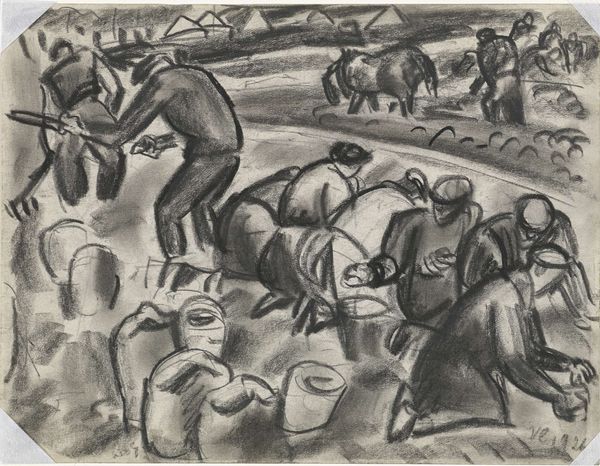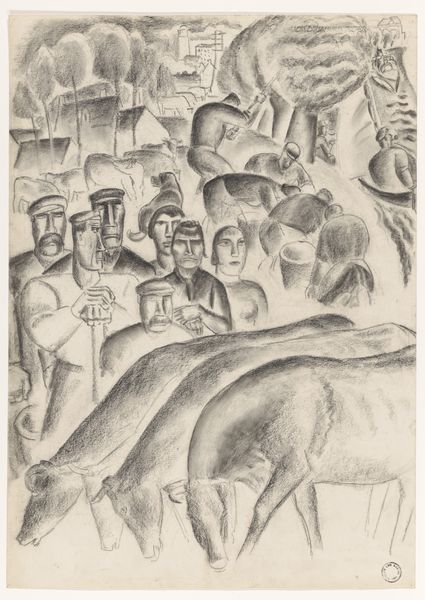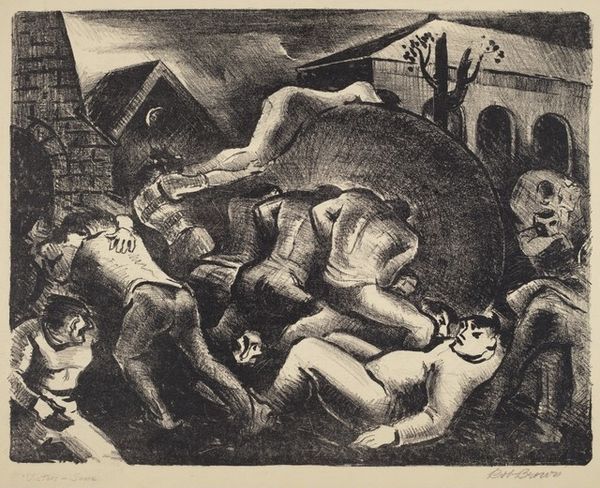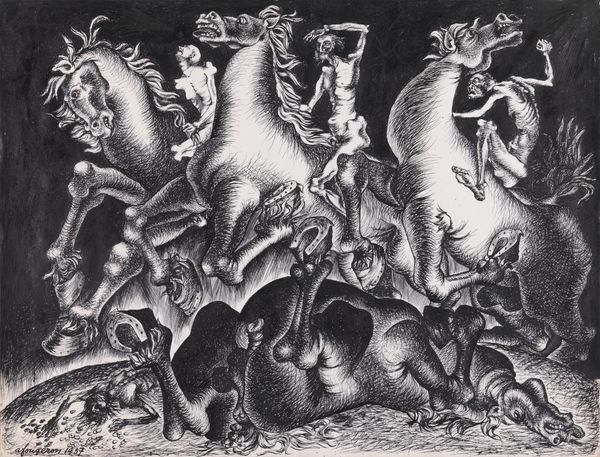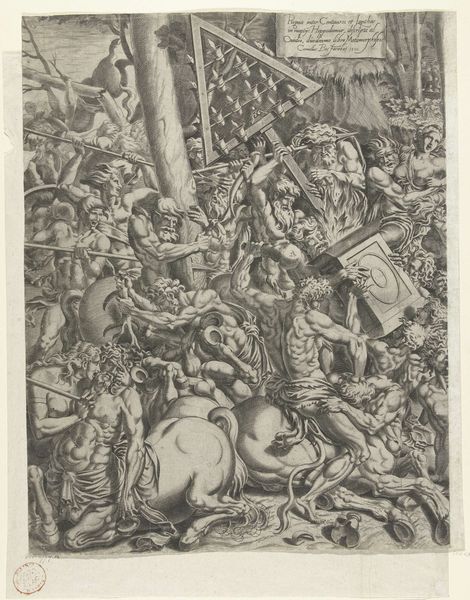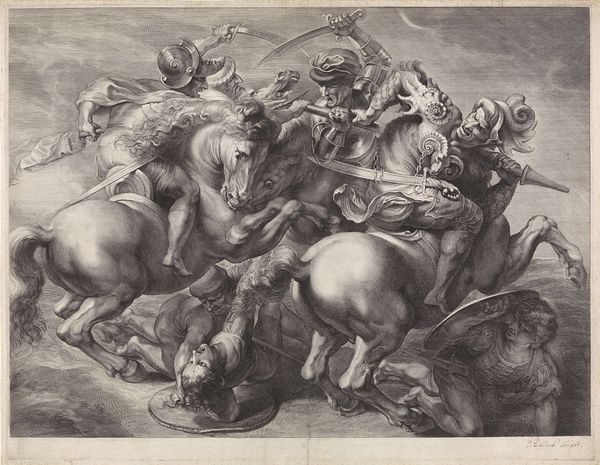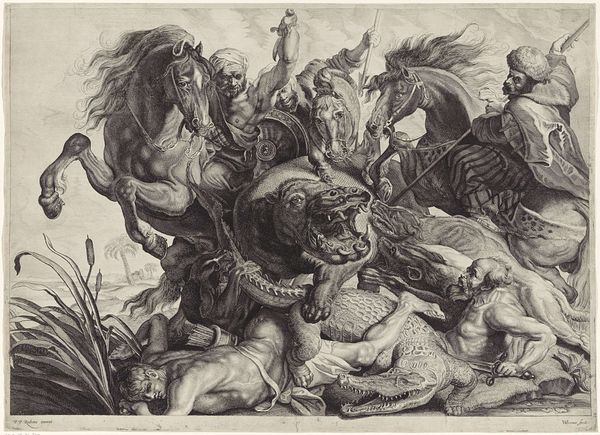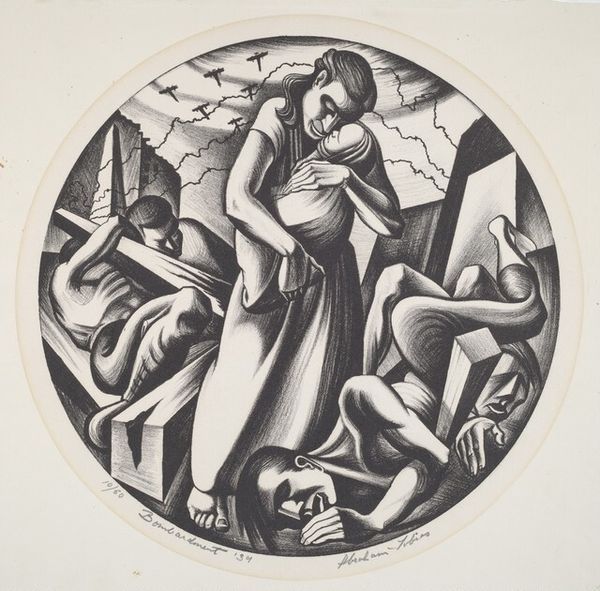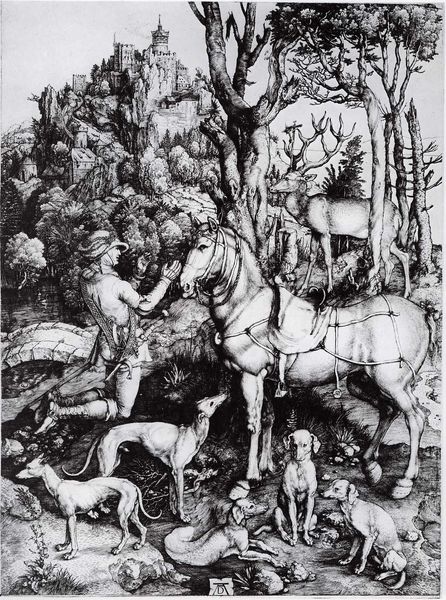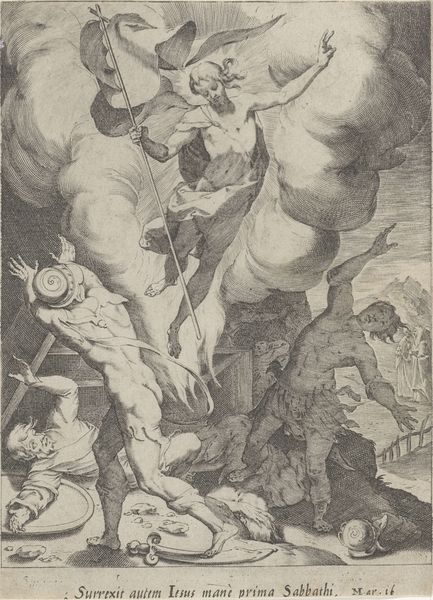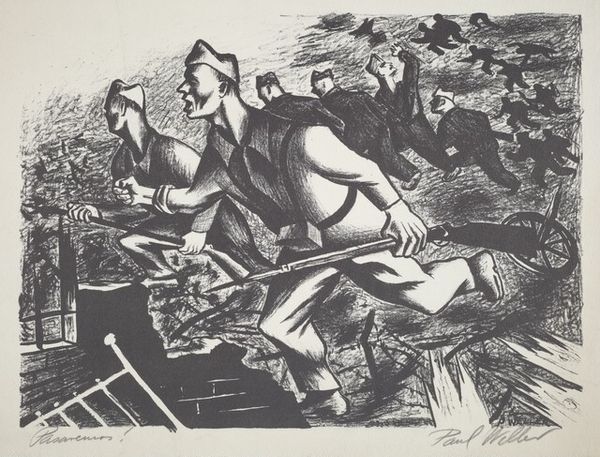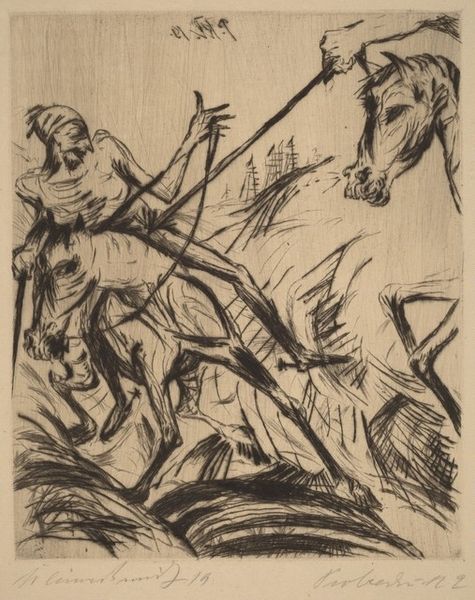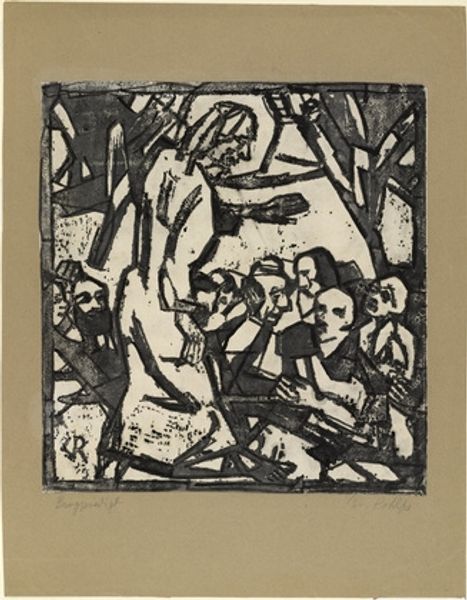
drawing, charcoal
#
drawing
#
landscape
#
charcoal drawing
#
figuration
#
expressionism
#
genre-painting
#
charcoal
#
realism
Dimensions: height 275 mm, width 280 mm, height 275 mm, width 280 mm
Copyright: Rijks Museum: Open Domain
Editor: Here we have Leo Gestel’s 1927 charcoal drawing, "Aardappelrooiers aan het werk op het land", which translates to "Potato Harvesters Working in the Field". The overwhelming darkness of the charcoal creates a somber and laborious atmosphere, which is very distinct. How do you read the composition in this piece? Curator: Immediately, I observe Gestel’s command of line and value to depict the laborers’ figures. Note how the absence of distinct facial features reduces the figures to near-abstract forms, focusing instead on their physical posture and the geometry of their labor. What semiotic significance do you attribute to Gestel’s conscious denial of individualized representation? Editor: That's fascinating, the semiotic weight of *denying* detail. So, would you say that he’s emphasizing the universal struggle of manual labor over individual experience? Curator: Precisely. Also, observe the repetition of angled lines and shapes that generate a powerful, albeit somewhat claustrophobic, effect. The ground and sky are almost indistinguishable. Is it not striking how he merges the figures with the very earth they till, as if the human form and the land itself become one inseparable unit through form and function? Editor: I see what you mean. The blending contributes to that somber tone I felt initially. It removes a clear separation between the figures and their environment, suggesting a kind of inescapable, cyclical existence, as if the figures have to give everything to their natural context to make ends meet. Curator: Gestel's simplification, devoid of superficial adornment, directs our attention to the foundational aspects of existence – toil, necessity, and the unyielding connection between humanity and land. Its semiotic essence is one of labor personified. Editor: Looking at it this way shifts my entire perspective. I was drawn to the darkness, but didn't recognize how every formal element contributed to this powerful message of human persistence. Curator: Indeed, Gestel employs formalism as a method of dissecting reality to bring a fresh perspective and focus our attention on the bare bones of labor and land.
Comments
No comments
Be the first to comment and join the conversation on the ultimate creative platform.
